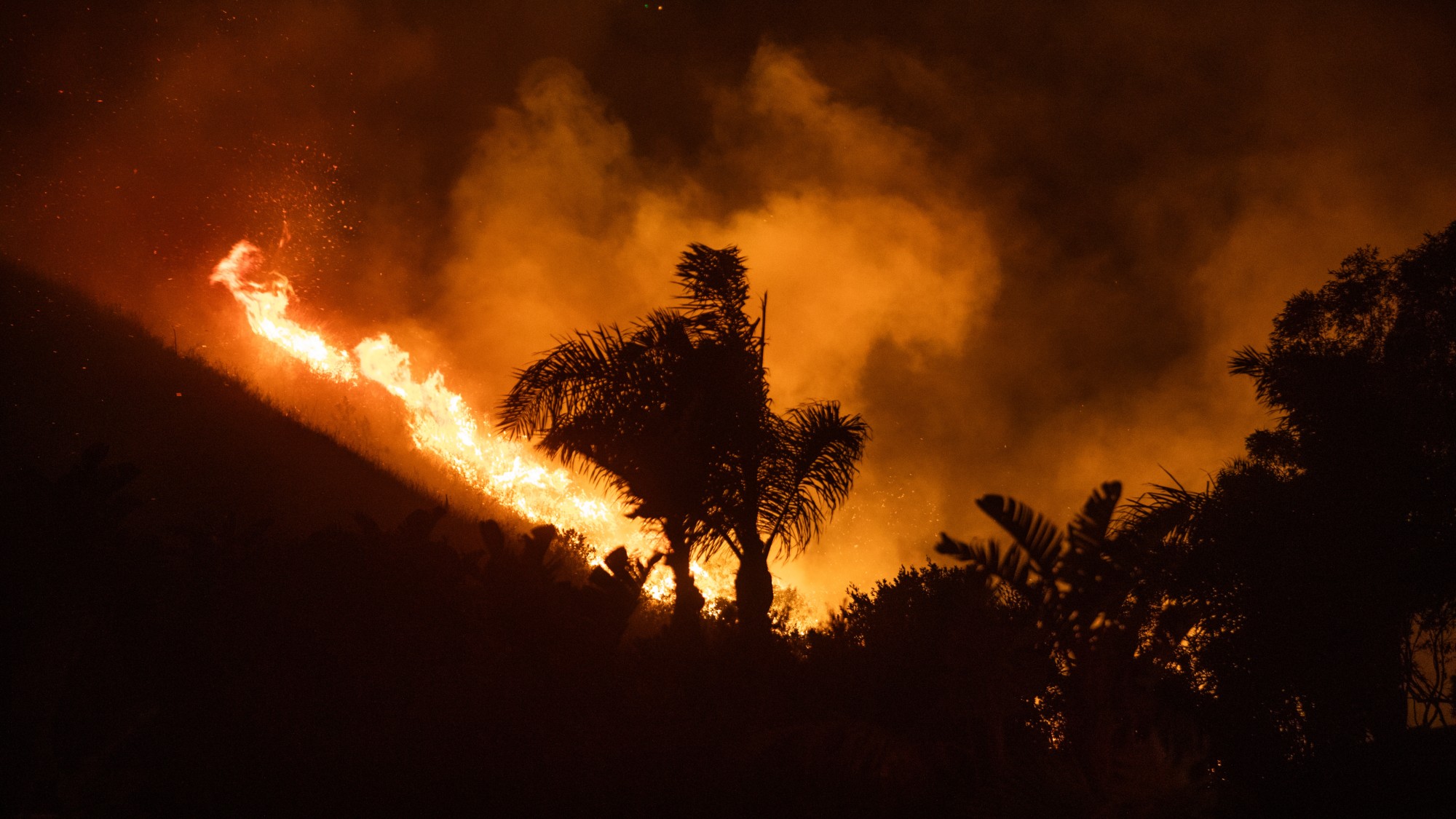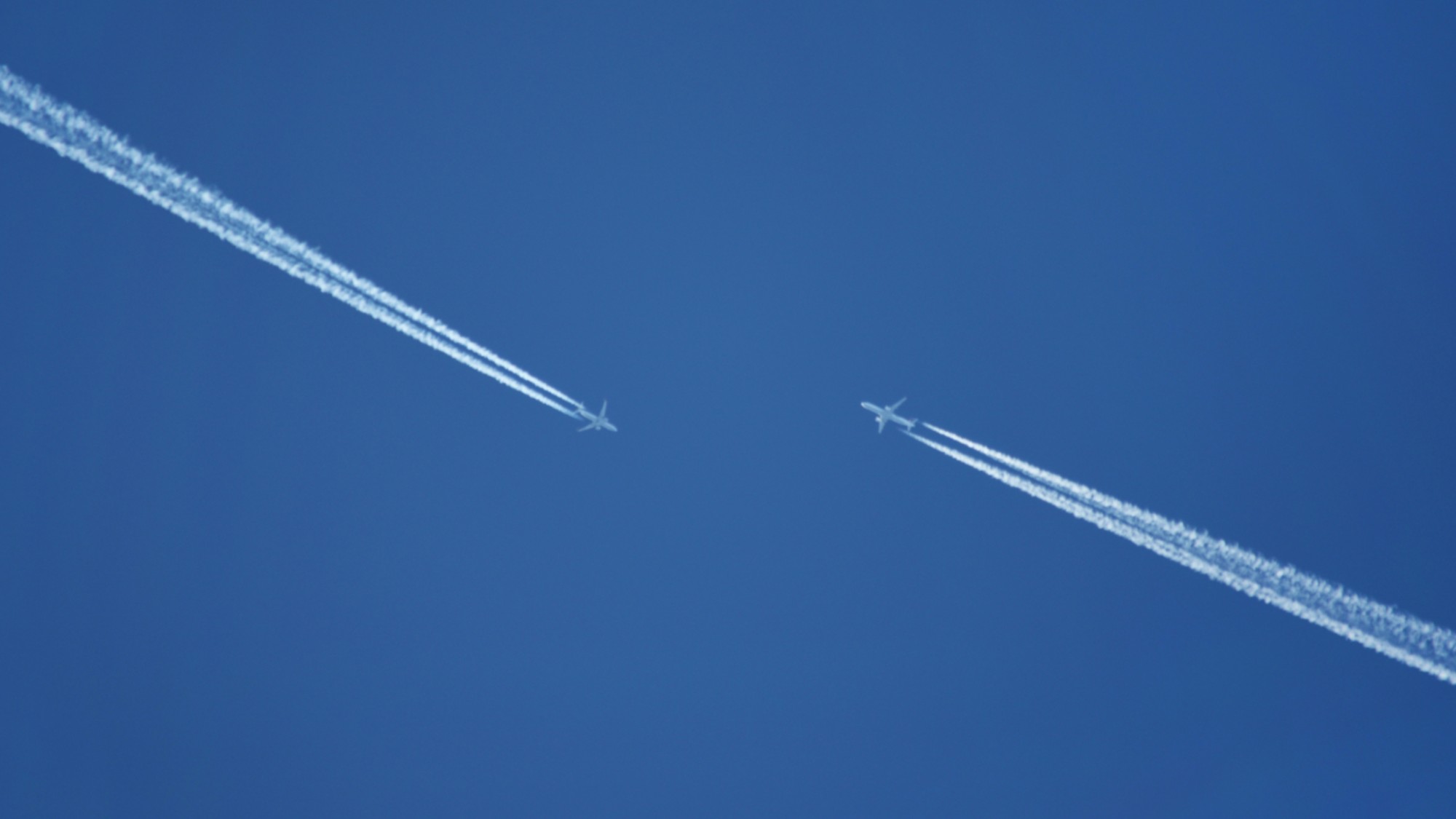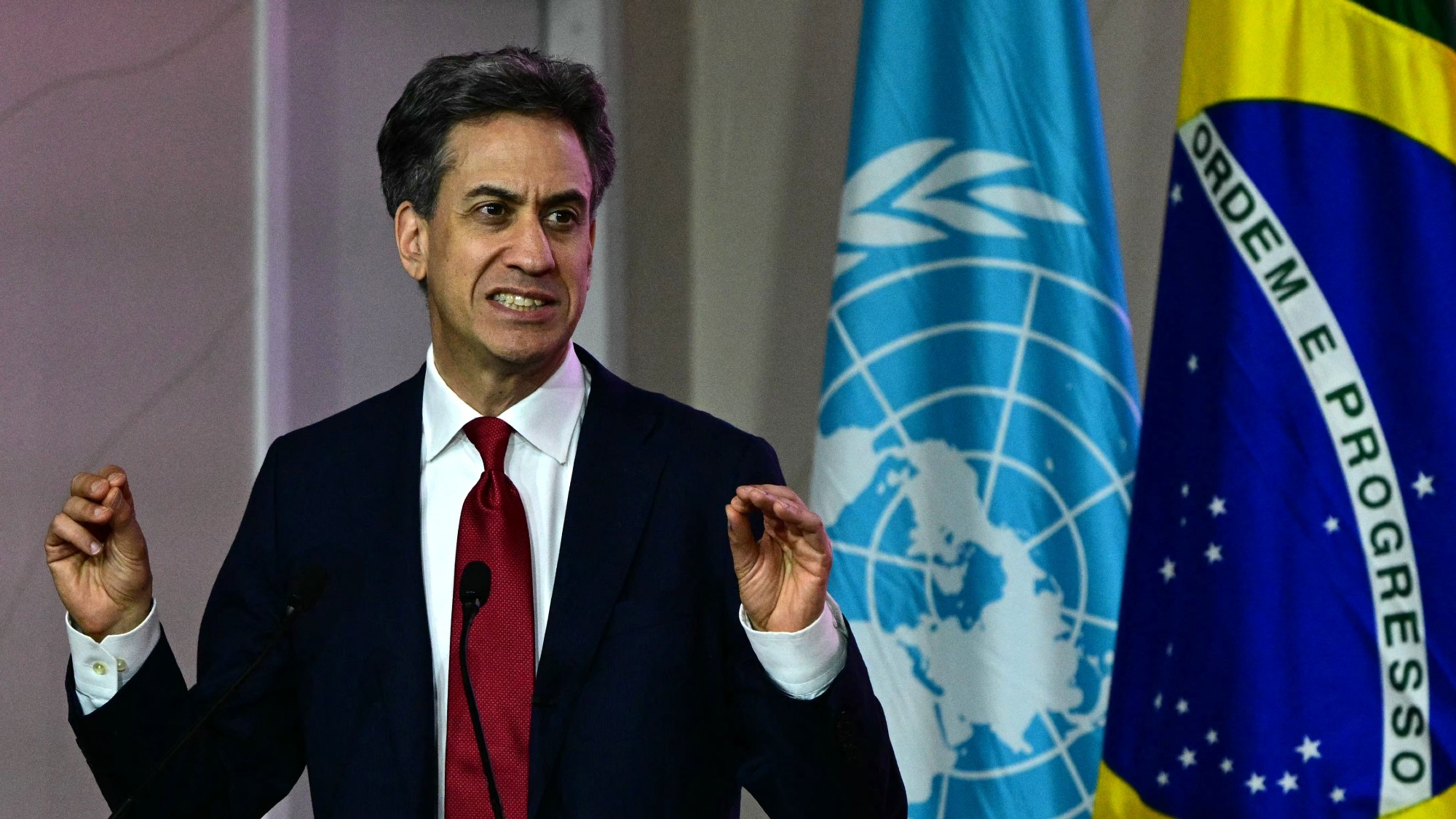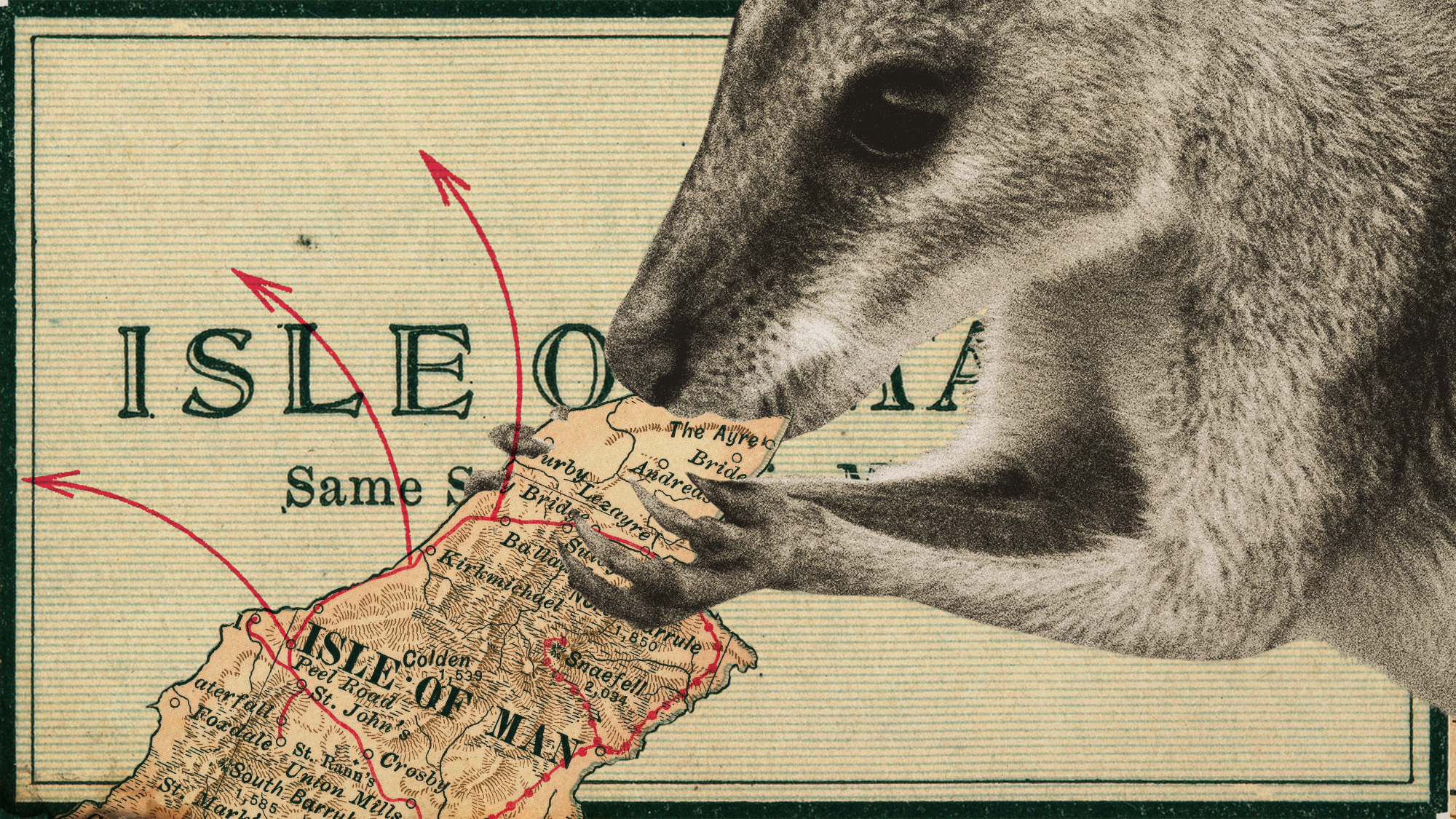What happens to wildlife during a wildfire?
While wildfires are naturally occurring, climate change is making them larger and more frequent


Los Angeles is experiencing the worst wildfires in the city's history. As thousands of people are forced to evacuate and many lose homes to the flames, wildlife is also facing deadly consequences. Plants and animals feel the effects of natural disasters just as humans do, and most will have to go through a similar recovery process.
How is wildlife affected by wildfires?
Like hurricanes or earthquakes, wildfires are disasters that can occur naturally. Wildlife is therefore generally prepared for it. "Forest animals typically have some ability to escape the heat," said National Geographic. "Birds may fly away, mammals can run, and amphibians and other small creatures burrow into the ground, hide out in logs or take cover under rocks. And other animals, including large ones like elk, will take refuge in streams and lakes." In some cases, fire is even beneficial to the natural landscape. "Heat from the flames can stimulate some fungi, like morel mushrooms, to release spores. Certain plants will seed only after a blaze. And some animals, such as mule deer and black-backed woodpeckers, require burned areas to both eat and nest."
Despite wildlife's ability to escape, wildfires are still dangerous and likely to cause casualties. "Some animals do die in the flames of wildfires, mostly the elderly and very young animals who can't escape," said the National Forest Foundation. "However, the majority of wildlife mortalities come after the fire is out, due to the loss of important habitat and food sources burned in the fire."
The Week
Escape your echo chamber. Get the facts behind the news, plus analysis from multiple perspectives.

Sign up for The Week's Free Newsletters
From our morning news briefing to a weekly Good News Newsletter, get the best of The Week delivered directly to your inbox.
From our morning news briefing to a weekly Good News Newsletter, get the best of The Week delivered directly to your inbox.
Mass destruction can completely alter an ecosystem. "The burns create a new type of habitat, usually open areas where dense forests used to be that are quickly colonized by grasses and shrubs," the outlet added. Because of this, invasive species can set up camp before the native species get a chance to recover and regrow in the area, permanently changing the ecosystem.
What about the future?
While wildfires are naturally occurring, climate change is making them larger and more frequent. The warming planet has given rise to megafires, or "large-scale, uncontrollable blazes that consume more than 100,000 acres of land," said North Carolina State University. Megafires, like the ones in Los Angeles, pose a significant threat to landscapes. "Since the early 1970s, the wildfire season in the western U.S. has grown from about five to more than seven months," said National Geographic.
"Wildlife have adapted to deal with smaller fires, and unfortunately, sometimes they can't escape these recent, big fires," Stephanie Eyes, a senior wildlife biologist for the U.S. Fish and Wildlife Service's Sacramento Fish and Wildlife Office, said to Newsweek. The fires also often "kill all or a portion of the tree canopy," said NC State. "The reduction in overstory trees allows more light penetration to the ground, leading to a denser understory and a general shift in the structural characteristics of the plant community."
Despite the intensity of these blazes, nature has the ability to heal. "Wildlife is incredibly resilient," Eyes said. "California has a long history with wildfire, and many species adapted to endure it."
A free daily email with the biggest news stories of the day – and the best features from TheWeek.com
Devika Rao has worked as a staff writer at The Week since 2022, covering science, the environment, climate and business. She previously worked as a policy associate for a nonprofit organization advocating for environmental action from a business perspective.
-
 The Week Unwrapped: what’s scuppering Bulgaria’s Euro dream?
The Week Unwrapped: what’s scuppering Bulgaria’s Euro dream?Podcast Plus has Syria changed, a year on from its revolution? And why are humans (mostly) monogamous?
-
 Will there be peace before Christmas in Ukraine?
Will there be peace before Christmas in Ukraine?Today's Big Question Discussions over the weekend could see a unified set of proposals from EU, UK and US to present to Moscow
-
 Quiz of The Week: 6 – 12 December
Quiz of The Week: 6 – 12 DecemberQuiz Have you been paying attention to The Week’s news?
-
 Death toll from Southeast Asia storms tops 1,000
Death toll from Southeast Asia storms tops 1,000speed read Catastrophic floods and landslides have struck Sri Lanka, Indonesia, Thailand and Malaysia
-
 Can for-profit geoengineering put a pause on climate change?
Can for-profit geoengineering put a pause on climate change?In the Spotlight Stardust Solutions wants to dim the sun. Scientists are worried.
-
 How will climate change affect the UK?
How will climate change affect the UK?The Explainer Met Office projections show the UK getting substantially warmer and wetter – with more extreme weather events
-
 Can the UK do more on climate change?
Can the UK do more on climate change?Today's Big Question Labour has shown leadership in the face of fraying international consensus, but must show the public their green mission is ‘a net benefit, not a net cost’
-
 The UK’s surprising ‘wallaby boom’
The UK’s surprising ‘wallaby boom’Under the Radar The Australian marsupial has ‘colonised’ the Isle of Man and is now making regular appearances on the UK mainland
-
 Did Cop30 fulfil its promise to Indigenous Brazilians?
Did Cop30 fulfil its promise to Indigenous Brazilians?Today’s Big Question Brazilian president approves 10 new protected territories, following ‘unprecedented’ Indigenous presence at conference, both as delegates and protesters
-
 Can the world adapt to climate change?
Can the world adapt to climate change?Today's Big Question As the world gets hotter, COP30 leaders consider resilience efforts
-
 Taps could run dry in drought-stricken Tehran
Taps could run dry in drought-stricken TehranUnder the Radar President warns that unless rationing eases water crisis, citizens may have to evacuate the capital
